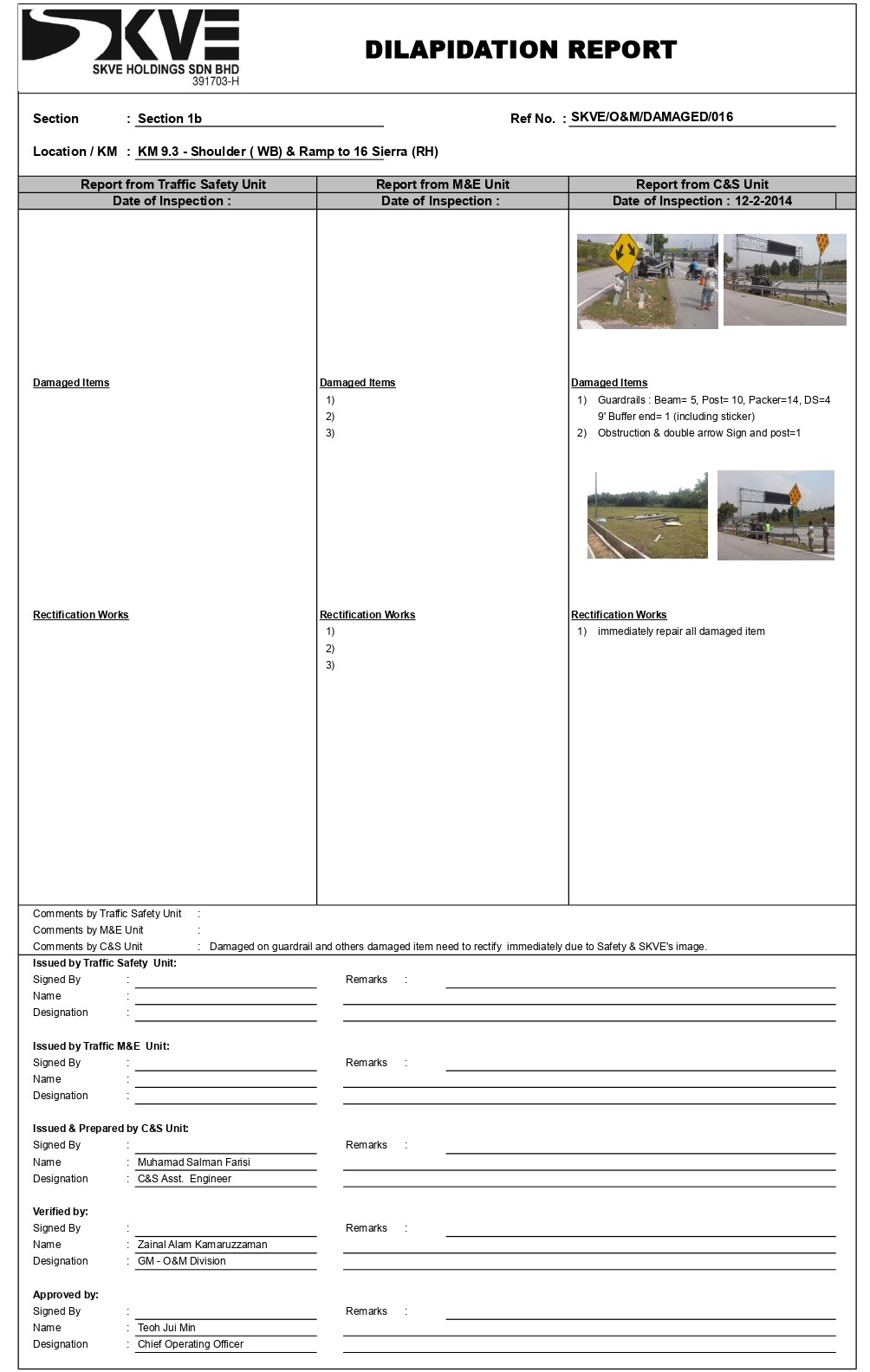
A dilapidation report is the result of a survey conducted to identify and record the condition of a property at a given point in time.
The report is prepared before and after construction work to ascertain the asset’s condition.
This article discusses the features and importance of preparing dilapidation reports for a construction project.
The documentation of dilapidation reports helps create a complete and provable record of the unforeseen or unintentional impact of construction works on the infrastructure and the surrounding.
All possible patent and latent defects observed and expected to be seen in the future are also pointed out during the inspection.
For example, in addition to the existing damages on the walls and floors, any other aspects of the property that might be affected by future construction work, like excavation or demolition, are also specified in the report.
Dilapidation reporting is performed even if no complaints or damages are caused during construction.
Dilapidation report formats are standardized and systematic to maintain consistent project records and support any claims.
The important details that need to be mentioned in any dilapidation report are:
The date of dilapidation inspection
Description of the area
Inspected items
Location plan view
Photos/videos of the inspection
Mention pre-existing defects
Signature of the engineer conducting the survey
It is recommended to construct dilapidation reports with full proof of photos, videos, and signatures of the pre-construction and post-construction conditions based on the complexity of the structure.
Dilapidation surveys and reports are prepared by an impartial third party, like a building consultant or a professional structural engineer. These criteria are followed to avoid any bias during future claims.

The building consultants who prepare dilapidation reports must understand high-risk areas of various construction types and possibilities of future damage, have foresight in minimizing risk and prepare a report with clarity.
The specific details an inspector looks at during a dilapidation survey are:
Tile cracks
Internal and external wall cracks
Exterior brickwork cracks
Concrete or paver cracks
Ground movement or settlement indications
Roof leaks, cracks, and missing roof coverings
Importance of Dilapidation Reports
Dilapidation reports are a single source of peripheral damages occurring due to construction works.
In large construction sites, certain works have the potential to cause damage to adjacent structures nearby. A pre-construction dilapidation report can help the owner claim any post-construction damages caused due to nearby construction work.
Dilapidation reports are an efficient tool for claiming latent defects in a structure. Latent defects are defects that are hidden and are not discovered within the defect liability period of a structure.
A dilapidation report mentioning non-satisfied work conducted during the construction whose after-effects are discovered after years can be used as a supporting document to claim once the issue becomes evident.
Dilapidation reports are not mandatory for every law, but they can help protect against litigation if somebody claims that a construction or demolition work has damaged their property or structure.
In order to know more about dilapidation reports and the rules, it is recommended to contact a builder or the local building authority.





